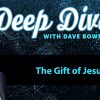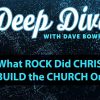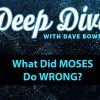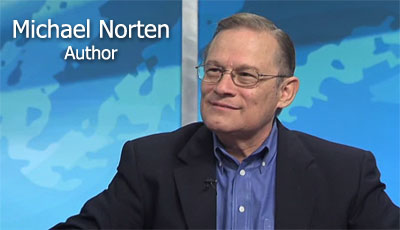
Do the Jewish Feasts actually symbolize the First Coming of Jesus Christ?
Dr. David Reagan and I were blessed by having Michael Norten as a guest on our television show Christ in Prophecy. Michael is a Dallas Theological Seminary graduate, formerly a pastor and staffer with Campus Crusade for Christ, and the television personality the Garden Guy. He’s written an absolutely fascinating book on the Feasts of Israel titled Unlocking the Secrets of the Feasts, explaining what each one means and how they are prophetically significant. I believe you’ll find the following interview with Michael concerning the prophetic importance of the Feasts that relate to the First and Second Comings of the Messiah a fascinating read.
Symbols of the Feasts
Dr. Reagan: Michael, your book is so full of insights concerning the Jewish Feasts. Give us some nuggets here about some of these Feasts from a Jewish perspective.
Nathan Jones: I particularly liked what you revealed concerning a ritual involved in the Passover. It concerns the wood that is rather like the cross of Christ. Can you tell us more about that?
Michael Norten: Yes, indeed. Justin Martyr had brought this fascinating point out in his writings concerning particularly when the Passover lamb was sacrificed. After the Passover lamb was sacrificed at the Temple, the priests would put the lamb on a pomegranate pole which included a crossbar to hold it up. The priests would take out its innards and wrap them around its head. When you look at that imagery, it very much has the appearance of Christ on the cross who is our Passover lamb.
Dr. Reagan: Oh, Man, isn’t that something?
Nathan Jones: That gives me goose bumps!
Michael Norten: Another very fascinating aspect of the Passover lamb involves if you remember, when the angel came to the shepherds and said, “Go to Bethlehem and you’ll find the baby wrapped in cloths, and lying in a manger. That will be a sign for you.” Did you ever wonder just what that sign was?
Dr. Reagan: Yes, sure I’ve wondered.
Michael Norten: Well, I didn’t even wonder at first. I’d heard that Christmas verse all my life and thought it sounded very nice. Later, though, I found out from the rabbis just what an incredible sign it really is. In Micah 5:2, it said that the Messiah would be born in Bethlehem. But, also in Micah 4:8 it said he would be announced at Migdal Eder, which means “guard tower of the flock.” A friend of mine who does excavating in Israel said that they had discovered the remains of Migdal Eder. It’s outside of Bethlehem about five miles. It was a two-story tower.
The shepherds would look out from atop the tower at the field and see the sheep far off. On the bottom floor they would bring in the pregnant sheep to assist in the birthing. Why? Because they were not the lowly shepherds that we think of. No, they were priests that worked at the Temple that were doing shepherding work to make sure the lambs were born without blemish for sacrifice at the Temple. So, when the lamb was born, these priestly shepherds would take strips of cloths that they had made from recycled priestly undergarments and would wrap the lamb tightly so it wouldn’t get blemished. Then they would place it in the manger so it wouldn’t get trampled. When the priestly shepherds saw the baby Jesus prepared just like their Passover lambs, they must have gone absolutely ballistic. I bet they exclaimed, “This is the Lamb of God prepared for sacrifice, unblemished for Him.” That’s why they were excited.
Dr. Reagan: Every chapter of your book contains gems like that. You’ve gotten a lot of them from Jewish sources, both Messianic Jews and Orthodox Jews. From the beginning to the end the book, it’s just filled with little gems like that which get me so excited. I just can’t recommend your book highly enough.
Michael Norten: When I saw all these little symbols that we as Christians just miss, and how they all point to Christ in everything concerning His First Coming, well I was just flabbergasted.
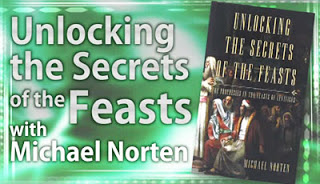
Point to the First Coming
Nathan Jones: Michael, you’ve told us a little about how the Feasts of Israel relate to the agricultural seasons and to history, but this is the part we really want to get into. Tell us about the prophetic meaning of the seven Feasts. And, how do they relate to Christianity and to the life of Jesus?
Michael Norten: What I discovered in my research of the Jewish Feasts was like getting new insights into God’s playbook on what His plans are for the ages. What I learned is that the first four Feasts are the Spring Feasts, and they were all integral to Jesus’ First Coming. The three Fall Feasts are all about Jesus’ Second Coming, and they provide just as much detail as the First Coming Feasts.
Nathan Jones: Does the big time gap between the Spring and Fall Feasts mean anything?
Michael Norten: Yes, the time gap represents the large separation between Jesus’ First and Second Coming, which is the Church Age.

Each Feast also represents some aspect of salvation. Concerning the Passover, we think of Jesus’ justification, when as the firstborn He was sacrificed for our sins so that when we accept His sacrifice in faith and repentance we can stand justified before God.
With the Feast of Unleavened Bread, we think of sanctification, because our sins were buried with Christ as He was buried during the Feast of Unleavened Bread. We are to live and walk in a sinless life as Jesus did.
With the Feast of First Fruits, Jesus was resurrected, so with First Fruits we think about glorification.
Then there’s Pentecost, which is the fourth and last feast concerning the First Coming. At Pentecost is when the Church got the Holy Spirit. What’s interesting is that during the Feast of Weeks the Jews received the Mosaic Law, but 3,000 men died in rebellion. Then, at the first Pentecost after Christ’s resurrection when the Church received the Holy Spirit, instead 3,000 men were saved. The Law brought death, but the Spirit brought life.
Dr. Reagan: You are saying the Feast of Pentecost from a Jewish viewpoint looks back to the giving of the Law at Sinai?
Michael Norten: Yes. They had the similar events happen at both Feasts — the giving of the Law and the giving of Grace. Quite fascinating!
Dr. Reagan: So, the first four Feasts point to the prophetic death of the Messiah. For example, the Feast of Unleavened Bread is a feast that points to the prophecy of the burial of the Messiah. Also, the Feast of First Fruits is about the resurrection, and in fact First Fruits always lands on Sunday which is the day when Jesus was resurrected. Then there is a period of 50 days and we come to the Feast of Harvest, or Pentecost, and that is the establishment of the Church and the pouring out of the Holy Spirit on that day.
Michael Norten: Right. The Feast of Weeks established Israel basically because they got the Mosaic Law.
Dr. Reagan: All of those Feasts are also fulfilled in the Christian experience. We’ve even got five months between the Spring and Fall Feasts which represents the Church Age.
In the fourth and last segment of our interview with Michael Norten concerning the Feasts of Israel, Michael will provide some fascinating parallels between the practices of the Feasts and what they symbolize concerning Jesus’ Second Coming.







